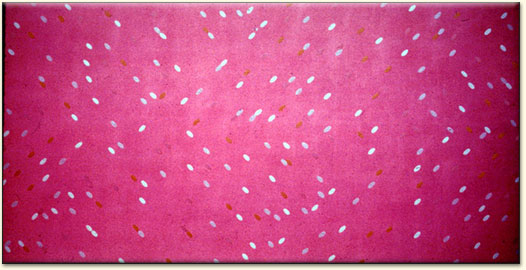Larry Poons
Larry Poons (1937) painted the deceptively ingenious and visually afferent Sunnyside Switch in 1963. By introducing an illusion of movement, Poons reconsiders the tradition of colorfield painting, one of the dominant styles in American art since the mid 1940s. Thus, Poons’ work is an early example of “Op Art.”
Sunnyside Switch, Larry Poons, 1963.
If a viewer stares intensely at the picture surface, focusing on one of the dots for 15 to 20 seconds, the cones — light and color receptors in the retina — of the eye overstimulate and remain stimulated for a short period, even after the viewer ceases looking at the dot. Thus, the cones continue to send image impulses to the brain (though in a complementary hue) and the viewer will “see” dots that are not really there. Moreover, if the viewer continues to look at the painting, with any movement of the eyes the afterimage dots will seem to jump accordingly. As some of Poons’ dots are elliptical rather than round, and placed on a diagonal axis, those afterimage dots will take on “direction” and will appear to streak across the canvas. A whole new design phenomenon thereby plays over the original composition. Because individuals have differing ocular sensitivities and view the total composition with different eye movement patterns, no two people experience or “see” exactly the same result.
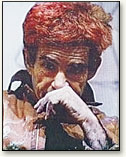
Larry Poons
Paintings like this are devices of pure design and color to sensitize and play tricks on the eyes: vibrating color combinations, perspective dislocations, moiré-like patterns, illusory distortions of form caused by alternating positive and negative designs, reversible images, and other traditional optical illusions.
Poons was influenced by the Boogie Woogie paintings that Piet Mondrian (1872-1944) produced in the United States during the two years before his death in 1944. In his early work, Poons painted dots and ellipses with connecting lines, creating zigzagging shapes. In Sunnyside Switch, the viewer still senses a Mondrian-esque ordered rectangular system , as a kind of invisible structure seems to hold Poons’ dot motifs suspended on a diagonal grid over the continuous color plane. Poons used the term “surface tension” to denote the quality of tautness, yet compositional tractability. However, the principal visual effect that distinguishes Poons’ work is generated by the device of photogenes - more commonly known as afterimages.
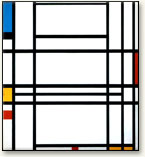
|
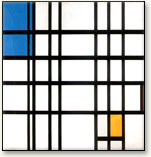
|
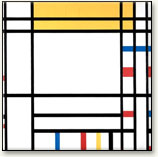
|
Boogie Woogie paintings by Mondrian |
||
By the mid-sixties, Poons moved away from the optical, scientific aspect of his work and toward a more poetic and painterly direction. Untitled (below) is an example of his new monochromatic style.
This simple combination of color and dots allows a complex interaction between the work and the viewer, encouraging the viewer’s imagination and creating a sense of movement. Poons rejects an idea of centralized composition. Although the dots set up a relationship with each other, every dot is equally important. The dots appear to be moving in different directions. Although they are close to one another, they never collide. Like an army of ants, they are organized, and their movement seems to continue outside of the canvas.
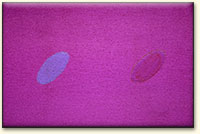
|
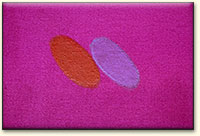
|
Details of above Poons painting. |
|
The work is abstract, which allows multiple readings. Is Poons representing a microcosm that is normally too small to see but that is now revealed to us through the work? The intense redness of the work invites bodily associations. The dots could represent a virus spreading around the body. However, in the black and white reproduction of the work, the painting loses some of its impact, as some of the dots are barely visible. The work no longer invites bodily associations. Poons’ dots and ellipses resemble a dance of snowflakes in the dark.
Over the course of four decades Poons has been endlessly inventive, changing his approaches and techniques. His early passion for music gives his art a rhythmic vitality that is close to music. In seeing this quality, Poons is close to Wassily Kandinsky. In the 1950s and 1960s, musicians and composers such as LaMonte Young, Phil Glass, and Steve Reich inspired Poons. According to him, “LaMonte was a really dynamic force”. A similar dynamic force can be found in Poons’ works.
